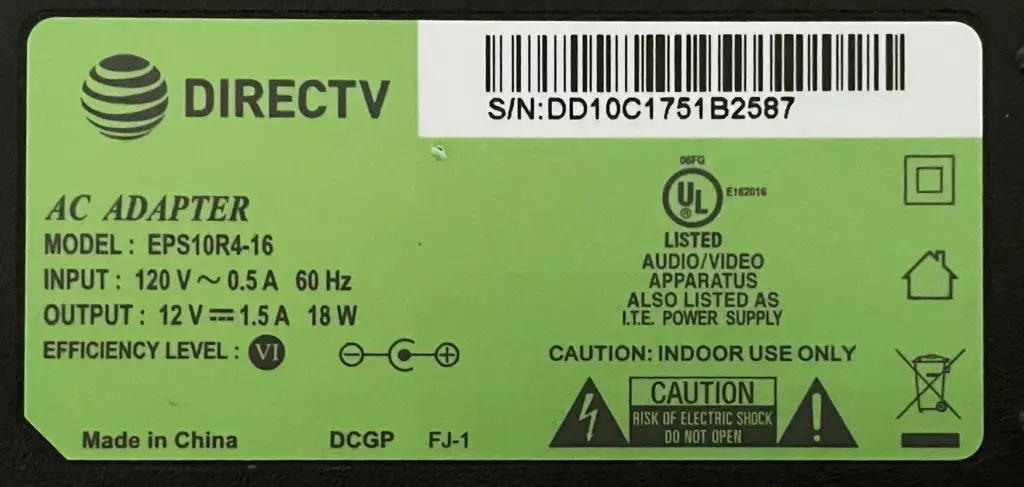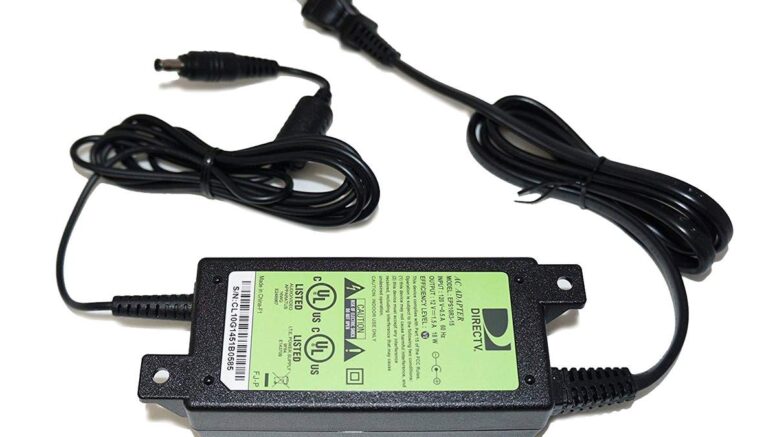Pretty much every DIRECTV satellite box made in the last 15 years runs off the power supply you see above you, the DIRECTV EPS10. That one power supply runs everything from network adapters to the latest Gemini client for satellite. The only exception is the Genie DVRs themselves which need a meatier power supply.
Knowing all this, there’s an interesting question that came across my desk the other day. It was pointed out that the DECA adapter will run off an EPS10 or a MicroUSB cable connected to pretty much any phone charger. If that’s true, I was asked, can you run any other devices off a phone charger?
Simple answer: you can’t.
Even if you frankenstein a USB cable so it has the right plug end on it, you can’t do it. It doesn’t work. I even tried it. It was hard enough finding the right tip, as it’s not a very common one. I sacrificed a fairly good USB cable so I would have one with nice beefy wires that were easy to solder. I didn’t expect it to work and… it didn’t. Nothing happened. I checked voltages and polarities, and all was right. I just didn’t work.
The answer is in the numbers
At this point, most of know that all power supplies are not created equal. Every power supply has a rating that either includes the volts and amps, or the watts that the device puts out. Watt ratings are used for things like USB cubes because the voltage is always the same. If there’s a question about the right voltage, the manufacturer puts volts and amps. You can see that rating on the green sticker the EPS10 has:

In this case they’ve helpfully told us that it’s 12 volts, 1.5 amps. For the math-challenged, they’ve also given us watts. If they hadn’t, all we would have needed to do was multiply volts by amps.
So the answer is right there in black and white (black and green?)… the receiver needs 12 volts. A USB cube supplies 5 volts. That’s why it doesn’t work.
Then why does it work for the DECA?
The DECA clearly has a dual voltage circuit that takes in whatever’s being supplied and converts it to the voltage actually used by the device. I haven’t dissected one but I’m willing to bet it actually runs off 5 volts and the power from the EPS10 is stepped down before being used.
But shouldn’t it work?
Here’s a bit more truth regarding current flow. The amps (and therefor the watts) listed on the power supply is the maximum supplied by the power adapter. Pretty much every device has a power regulator so that it only pulls the current that it needs. So, if I had a power supply that output 12 volts but 40 amps, it would still be safe to use with a DIRECTV box. The box would just pull the amps it needs and not what it doesn’t.
So if we know that, we know that there are a lot of phone chargers that supply 25 watts or more. The DIRECTV box only needs 18. Could that kind of charger be used to power a DIRECTV box? Since I had my cut-up USB cable, I tried them. Nope, still didn’t work.
But it could work. If I were really up to the task, I’d build a small circuit board that takes in 5 volts at 3.6 amps, upped the voltage to 12 volts, and that would drop the amperage to 1.5 amps, exactly what my DIRECTV box wants. Yes, that would work. But it’s not a real-world solution.
Two reasons DIRECTV doesn’t use USB power for its devices
My guess is that the EPS10 is made and given out in huge quantities. It’s really helpful to have a relatively universal power supply. They could re-engineer a USB power supply for these older devices, but it wouldn’t be a benefit. The new Gemini Air and the DECA both use USB power, and I wouldn’t be surprised if all newer DIRECTV boxes went in that direction. When the first devices to use the EPS10 were engineered, USB power was not as advanced or as common as it is now, and it probably made sense to go with a dedicated power supply that wouldn’t be mistaken for a different one.
The other reason is that most DIRECTV devices do actually use 12 volts. It’s generally considered a better idea to “step down” voltage than “step up.” In other words it’s better to convert from 12 volts to 5 volts, rather than converting 5 volts to 12 volts. I vaguely remember from long-ago classes that this has to do with the loss inherent in upping voltage. If there are some electrical engineers out there who can comment below, I’d appreciate it. So the point here is that it’s possible to step up a high-wattage USB power supply to work with a 12 volt device, it’s just not the best move.
Want to know more? Need parts and accessories?
This tutorial is sponsored by SolidSignal.com. Get the things you need to live your best digital life when you shop at Solid Signal! If you have questions about anything you see or want to find something particular, call the experts at 888-233-7563 or fill out the form below.




